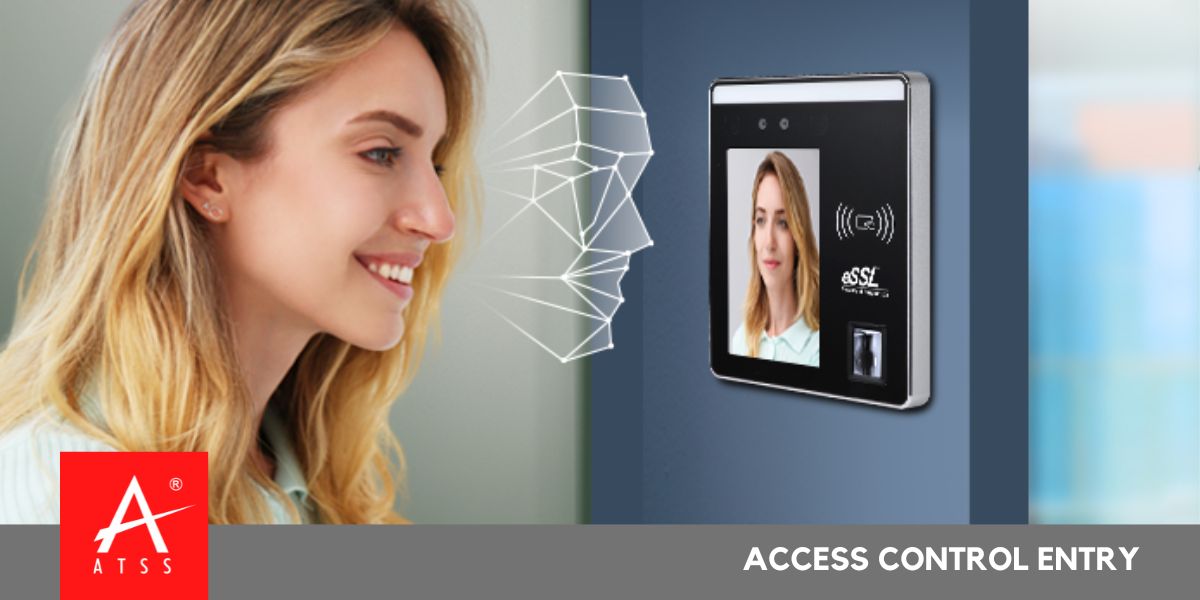ACCESS CONTROL ENTRY
The Ultimate Guide to Access Control Entry Systems:
Introduction
In today’s world, ensuring secure access control is crucial for businesses, homes, and institutions. Traditional lock-and-key systems are no longer sufficient, as they pose security risks and inefficiencies. Access control systems provide a smarter, more reliable solution to monitor and regulate entry while enhancing security and convenience. This guide explores different access control technologies, including entry control systems, biometric authentication, RFID solutions, and wireless access systems, to help you choose the best security solution for your needs.
- What is an Access Control System
An access control entry is a security mechanism that manages and restricts entry to a building, room, or secured area. These systems use advanced authentication methods such as PIN codes, RFID cards, biometric scans, and mobile-based access to ensure that only authorized individuals gain entry.
Benefits of Access Control Systems
- Enhanced Security – Eliminates the risks of lost or duplicated keys.
- Convenience – Provides easy access using smart devices and biometrics.
- Real-Time Monitoring – Tracks entry and exit logs for security audits.
- Customizable Access Levels – Restricts access based on roles and permissions.
- Integration with Other Systems – Connects with security cameras, alarms, and IoT devices for a unified security solution.
Types of Access Control Systems
1. Entry Control System
An entry control system allows businesses and organizations to manage who enters their premises. These systems may include card readers, biometric scanners, or PIN-based access.
- Best For: Office buildings, commercial spaces, and gated communities.
2. Door Access Control
A door access control system restricts access to a specific door, ensuring only authorized personnel can enter.
- Best For: Secured rooms, restricted office areas, and residential security.
- Common Methods: Keycards, fingerprint recognition, and smartphone-based access.
3. Smart Access Control
A smart access control system leverages IoT and AI to enable advanced security features, such as facial recognition and real-time alerts.
- Best For: Smart homes, tech-driven workplaces, and government buildings.
- Features: Remote access control, visitor management, and cloud-based security.
4. RFID Access Control
An RFID-based access control system uses radio-frequency identification (RFID) cards or key fobs to grant or restrict entry.
- Best For: Corporate offices, universities, and membership-based facilities.
- Advantages: Contactless, easy to manage, and cost-effective.
5. Biometric Access Control
A biometric access control system authenticates users based on fingerprint, facial recognition, retina scan, or voice recognition.
- Best For: High-security zones, financial institutions, and research labs.
- Advantages: High accuracy, impossible to forge, and seamless integration.
6. Keyless Entry System
A keyless entry system eliminates traditional keys and enables access through keypads, biometrics, or mobile apps.
- Best For: Residential properties, hotels, and rental apartments.
- Advantages: No risk of lost keys, customizable PINs, and enhanced security.
7. Security Access Control
A security access control system combines multiple security measures, including CCTV integration, intrusion alarms, and access logs.
- Best For: Banks, airports, military bases, and large enterprises.
- Advantages: Comprehensive security, real-time monitoring, and intrusion detection.
8. Electronic Access Control
An electronic access control system utilizes electronic keypads, magnetic locks, and sensors to regulate entry.
- Best For: Commercial buildings, educational institutions, and hospitals.
- Features: Automation, centralized access control, and cloud connectivity.
9. Wireless Access Control
A wireless access control system connects through Wi-Fi, Bluetooth, or cellular networks, eliminating the need for extensive wiring.
- Best For: Temporary workplaces, event venues, and modern homes.
- Advantages: Easy installation, remote control, and flexible scalability.
How to Choose the Right Access Control System
When selecting an access control solution, consider these factors:
- Security Level Required – Choose a basic card-based system for standard security or a biometric system for high-risk areas.
- Scalability – Opt for cloud-based or wireless solutions if your needs may grow.
- Ease of Use – Select a system with a user-friendly interface and mobile accessibility.
- Integration with Existing Systems – Ensure compatibility with security cameras, alarms, and IoT devices.
- Budget – Compare features and costs to find the most cost-effective solution.
Installation & Setup Process
Step 1: Assess Security Needs
Evaluate the size, entry points, and security risks of the property.
Step 2: Choose the Right Technology
Decide between biometric, RFID, keyless, or wireless access control.
Step 3: Install Hardware & Software
Set up card readers, fingerprint scanners, or smart locks, and integrate with security software.
Step 4: Configure User Access Levels
Assign access permissions based on roles (e.g., employees, managers, guests).
Step 5: Test & Train Users
Ensure the system functions correctly and educate employees or residents on its usage.
Future Trends in Access Control Technology
- AI-Based Access Control – Enhancing security with predictive threat detection.
- Blockchain for Secure Authentication – Improving data security and preventing identity theft.
- Mobile-Based Access Systems – Replacing traditional keycards with smartphone authentication.
- Cloud-Integrated Access Control – Enabling remote management and real-time updates.
- Touchless & Voice-Controlled Entry – Enhancing hygiene and convenience in post-pandemic security systems.
Conclusion
A smart access control system is essential for modern security needs. Whether you require biometric access, RFID authentication, wireless entry, or electronic security solutions, choosing the right system can enhance safety, improve convenience, and streamline access management. Investing in a reliable access control system ensures better protection and efficiency for your business, home, or institution.
Upgrade your security today with the best access control system that meets your requirements!

